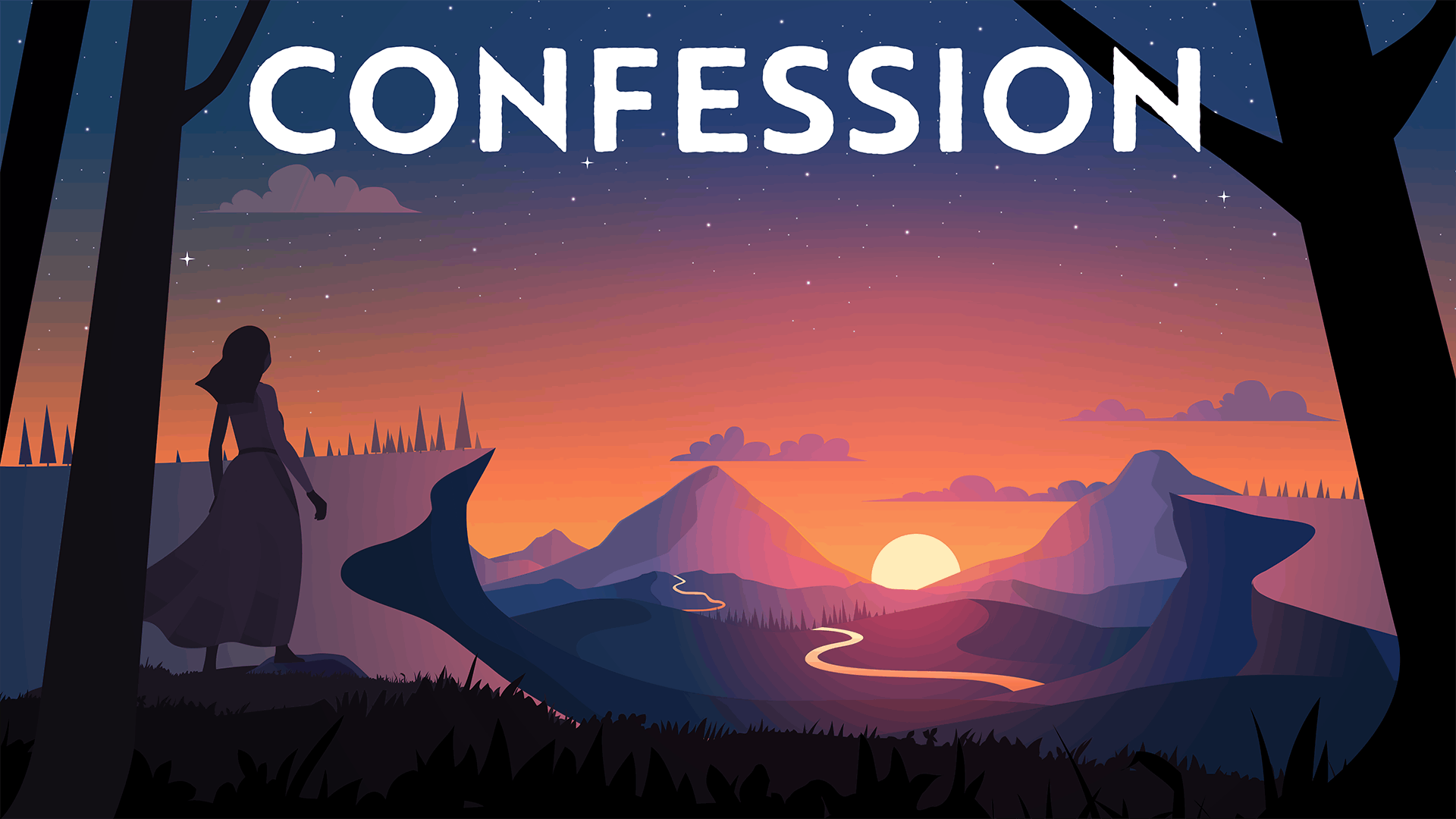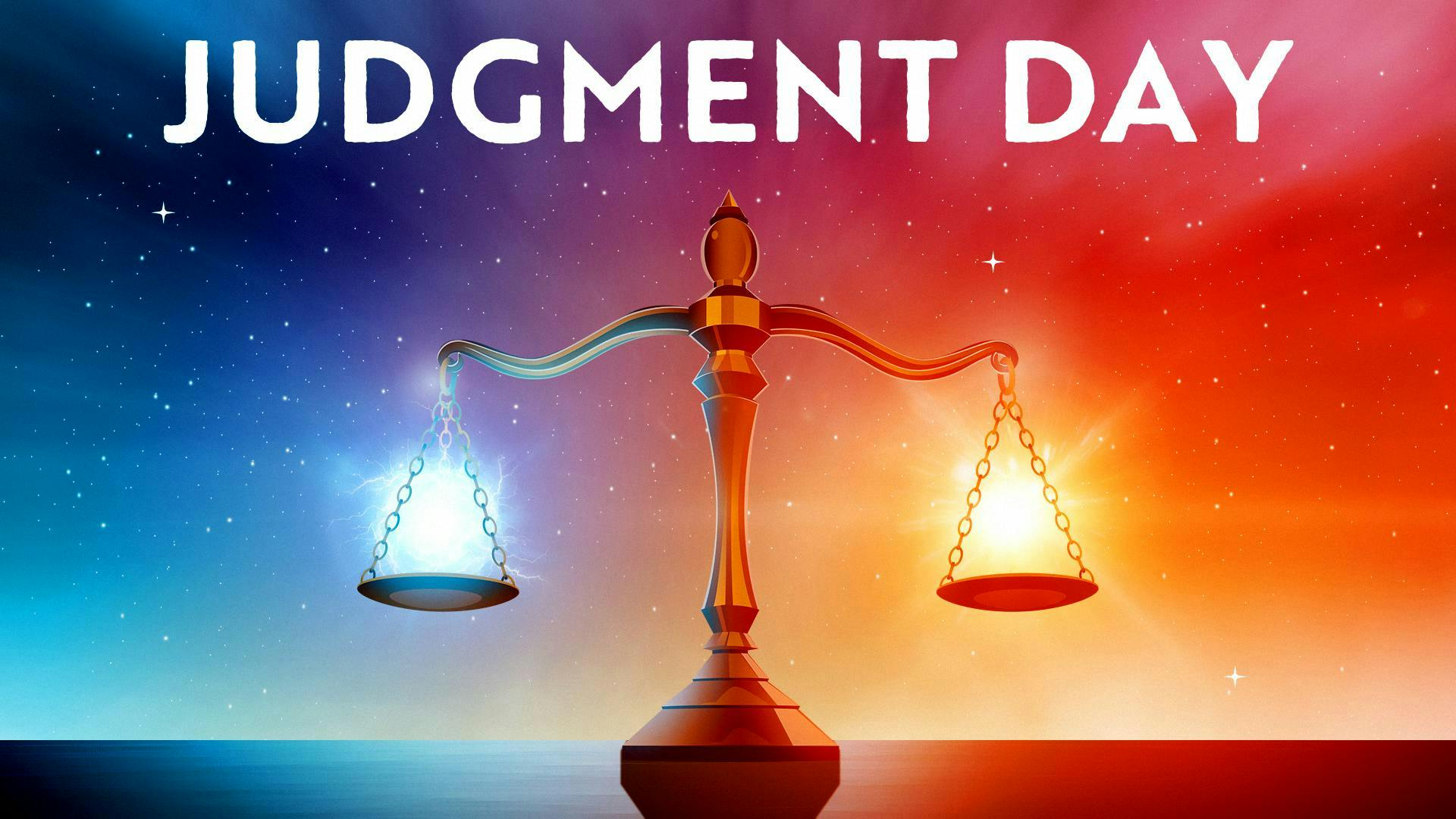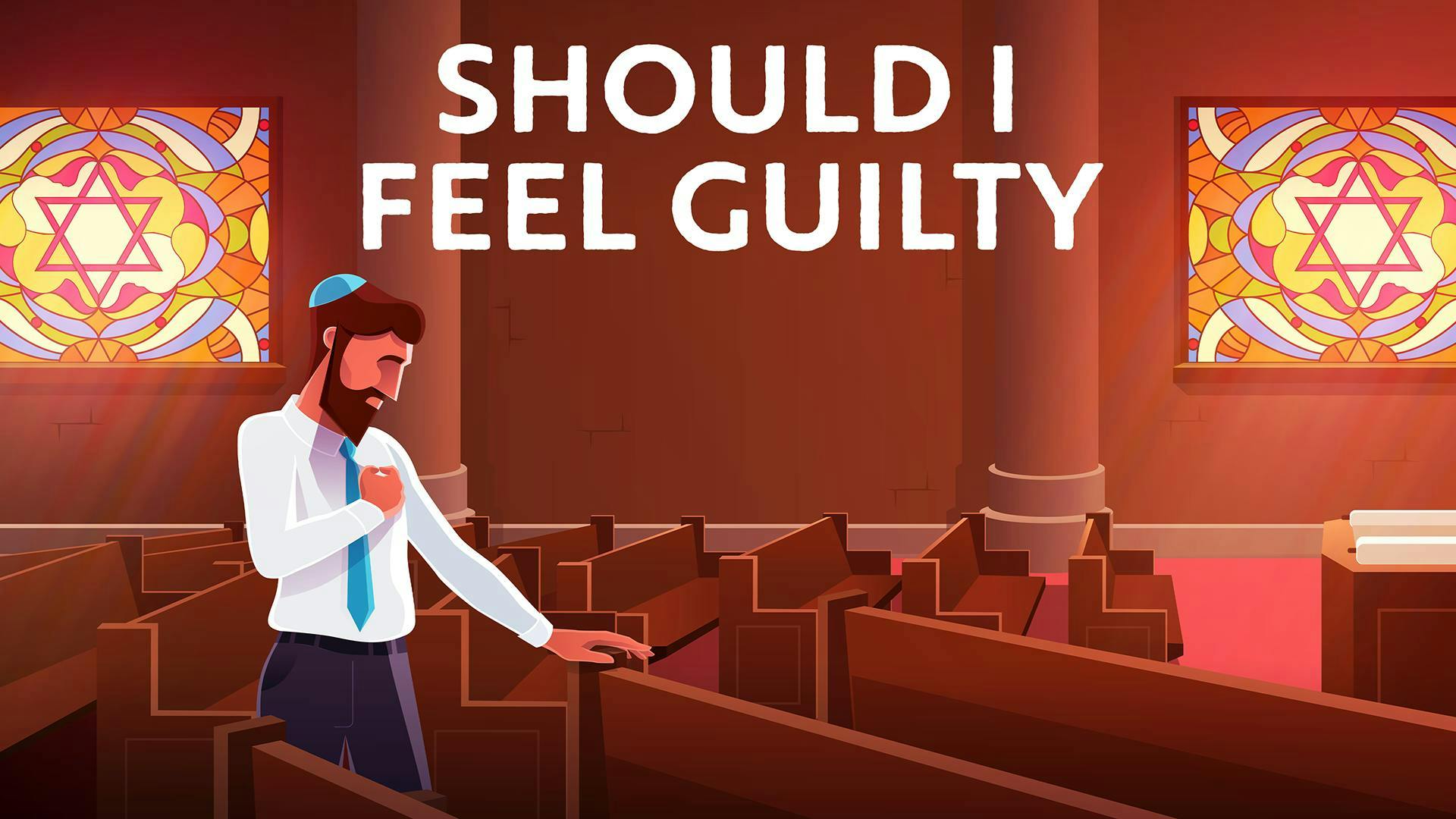Finding Meaning in Tisha B’Av
On Tisha B’Av we mourn for all tragedies throughout Jewish history. What meaning can we find in Tisha B’Av’s far reaching scope?
By Tikva Hecht | 9 August 2024 | 10 Minute Read
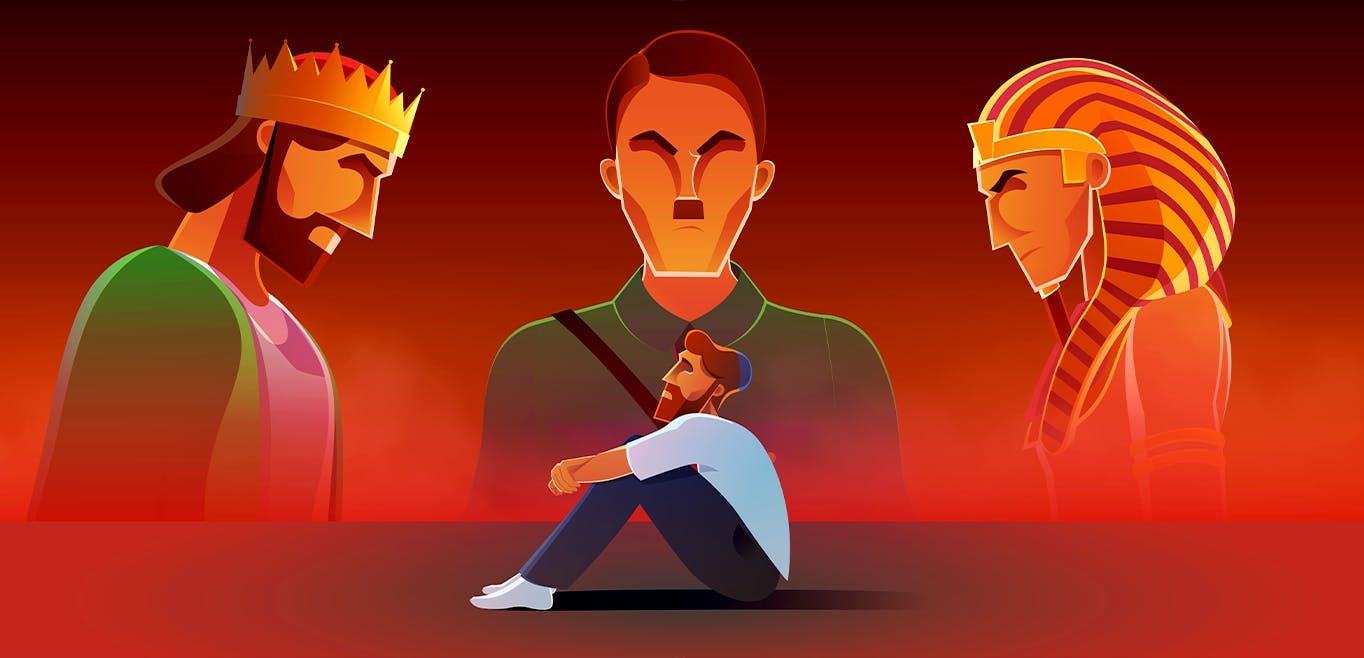
Looking for more?
We have hours of delightful videos and podcasts to enhance your Yamim Noraim experience.
Finding Meaning in Tisha B’Av
When it comes to finding meaning in Tisha B’Av, there are many roads to go down. You might explore how the loss of the Temple is relevant for us, today; or dive deep into sinat chinam (baseless hatred), which the sages tell us was the catalyst for the Temple’s destruction; or focus on the liturgy or the texts associated with this day, like Lamentations, Kinot, or Job.
In this article, I want to take a broader approach and explore how we might find meaning in the larger experience of Tisha B’Av as a whole. To get started, I want to share with you a little of my own struggle with Tisha B'Av.
The Problem of Losing Focus
I’ve often found it difficult to maintain a sense of meaning throughout Tisha B’Av. As the fast winds on, my focus wanes.
Now, I want to be clear, I don’t think this is because Tisha B’Av lacks meaning enough to fill a full day. In fact, just the opposite. My problem isn’t that Tisha B’Av is underwhelming in its significance, but that it can be overwhelming. It’s brimming with emotional intensity, but, ironically, too much meaning can often be as disengaging as too little.
I imagine some of you are nodding along right now, relating to every word you’ve just read. But I also imagine some of you are not. So let me spell out a little more what I mean.
On the most basic level, Tisha B’Av finds its meaning and its impetus in a single event: we are mourning over the destruction of the Beit Hamikdash, the Jewish Temple. According to the Mishna (Taanit 4:6), both the First and Second Temples were destroyed on this same day, hundreds of years apart.
But while the loss of the Temple is the central tragedy we mourn on Tisha B’Av, the Mishna goes on to list three other tragedies that eerily occurred on Tisha B’Av as well:
- The sin of the twelve spies;
- The crushing of the Bar Kochba rebellion;
- The plowing of Jerusalem by the Romans.
Over time, the scope of Tisha B’Av expanded even more. And even more. Until, finally, it became the day on which we mourn all national tragedies throughout Jewish history – regardless of whether they actually occurred specifically on the ninth of Av or not.
The expansive nature of the day is reflected in the fast’s liturgy. We read the Book of Lamentations, bewailing the destruction of Jerusalem at the time of the First Temple, but we also recite Kinot, a collection of heart wrenching dirges written over the centuries, but mostly during the Crusades and the Inquisition. And though not an official tradition, many spend some part of the afternoon watching Holocaust movies or documentaries. Ancient, medieval and modern tragedies are all remembered side by side.
There are other fast days and memorial days, not to mention holidays, on the Jewish calendar – but none are quite like Tisha B’Av in this open-ended, ever-accumulating way. However, this feature which makes Tisha B’Av unique, also makes the day particularly demanding.
How are we meant to generate real grief over so much loss and devastation all in one day? How much can our hearts actually hold? How fast can they turn from one tragedy to the next, without getting emotional whiplash? Or worse, being left emotionally empty. It’s like we’re being asked to speed date with history – five minutes for book burnings; ring the bell; five minutes for blood libels. It's exhausting and desensitizing and often leaves me wondering if trying to mourn for every tragedy, just gets in the way of properly mourning for even just one of them.
Which leads to a deeper question: what is the value of having a single day set aside for such epic mourning? Why squeeze all this sadness into 25 hours? Why group all this loss together and grieve over all of it all at once?
How do we find meaning in this overarching aspect of Tisha B'Av?
A Clue from the Sages
I recently learned a Gemara that I think hints at an answer to our questions. It’s a Gemara on that Mishna from earlier, the one which lists the original five Tisha B’Av calamities.
The Gemara (Taanit 29a) asks what at first seems to be a straightforward question on the mishna: how do we know each of these five events occurred on Tisha B’Av?
Here’s the interesting thing: for the first two calamities – the spies and the destruction of the First Temple – the Talmud makes careful, calculated arguments that they occurred on the ninth of Av based on timelines given to us in Tanach. But when it comes to the second Temple, the Talmud’s “proof” that it, too, was destroyed on Tisha B’Av is far more cryptic and far less about numbers:
וּבַשְּׁנִיָּה מְנָלַן, דְּתַנְיָא: מְגַלְגְּלִין זְכוּת לְיוֹם זַכַּאי, וְחוֹבָה לְיוֹם חַיָּיב
And regarding the Second [Temple], from where do we know this? As it is taught, We roll favor to a favorable day and guilt to a guilty day.
Keep in mind, the destruction of the Second Temple occurred only a few generations before the Mishna was redacted. We’re not talking about an obscure event lost in the annals of time. At the very least, the Talmud could have easily said we know this date from tradition (this is the answer given for the next of the five calamities). But instead, the Gemara seems to execute a kind of sleight-of-hand, subtly replacing its original question with another: it’s no longer really asking ‘when did this event occur?’, but ‘why did it occur on this day?’ As if there must be some logical explanation lying behind the date. And what a strange logic the Talmud provides! We roll guilt to a guilty day.
One way to understand the Sages’ strange claim is metaphysically, as a statement of faith: God orders the universe with intention, and in some way this even applies to determining the dates on which major events occur. Once the First Temple was destroyed on Tisha B’Av, God saw fit to ensure other necessary tragedies would fall out on that day as well. And in fact, just a few lines earlier in Taanit, the Gemara suggests that God doomed this day even before the First Temple fell, in response to the sin of the spies. So maybe the Talmud is just reminding us, hey, you know why the Second Temple was destroyed on this day? This day is divinely earmarked for tragedy. Maybe.
I wonder if there is another layer of meaning in the Talmud, one that is less about peering under the veil of God’s providence and more about peering into our own relationship with history and trauma. To see what I mean, we need to keep reading in the Gemara.
A Deeper Resonance Between the Two Temples
Right after this strange assertion about rolling guilt to a guilty day, the Gemara goes on to describe the final moments of Temple service on the night that the first Beit Hamikdash was destroyed. We’re told that it was motzei shabbat, Saturday evening after the sabbath. We’re told that the priests were singing. And we’re told that their singing was cut off mid verse by the attacking Babylonians.
And then we’re told very simply: וְכֵן בַּשְּׁנִיָּה, and likewise, for the Second Temple.
The Talmud is suggesting an incredible recurrence between the destruction of the First and Second Temples down to the very words on the priests’ lips cut short by their respective attackers. I wonder how literally we are meant to take this passage. Or if, in fact, reading this passage as merely historical would be doing a disservice to the emotional gut punch it packs. The image of the priests singing as the Sabbath exits, as the enemy approaches – singing as they must have heard the enemy approaching over the sound of their own voices – is shattering.
וְכֵן בַּשְּׁנִיָּה And likewise, for the Second Temple.
Far beyond corresponding days of the month or week, the Talmud seems to be painting the burning of the Second Temple in the precise image of the First. As the details of these nights are equated, so are their pathos and their sorrow. It is almost as if we are being primed to see these two separate acts of destruction as one. As if what really matters to Chazal is not just the fact that both Temples were destroyed on the same day, but the impact of this symmetry on our memory of these events – how we might remember them almost as memories of each other.
I wonder if this is what the Talmud means by saying that favor is rolled to a favorable day and guilt to a guilty day. Tisha B’Av may be uniquely, divinely earmarked for tragedy, but perhaps this decree against the 9th of Av speaks to a deeper truth about time and tragedy in general: one bad day, one guilty day, is always a manifestation of the bad days, the guilty days, that have come before it.
Nested Wounds
One of the defining features of trauma is a sense of being stuck in the past. Try as you might to move on, the present is an obstacle course of triggers yanking you back to that moment of hurt. All the more so when new trauma is experienced and compounds with the old.
Perhaps the Sages understood this, not just on an individual level but on a national level as well. Perhaps they understood that the destruction of the Second Temple was not an isolated experience but a re-experiencing, a re-opening of a deeply nested wound. Which means that remembering and mourning the loss of the Second Temple is also not an isolated experience. On some level, to mourn one temple necessarily evokes mourning for the other.
Of course, I don’t know if this was truly the intent of the Sages, but this subtle hint to a kind of traumatic resonance between the two Temples seems to speak to the far-reaching nature of Tisha B’Av. We might think of Tisha B’av as a day designed to send out minds and hearts ricocheting through time, hitting a thousand different destinations. But the Sages seem to be prompting us to see – and feel – the throughline connecting all these different destinations, and so see – and feel – how to commemorate one is to commemorate all of them. To roll all of them into one.
Seen through this lens, Tisha B’Av is no longer a fragmented day, but an incredibly unified one. And perhaps with this in mind, this is how we might experience it. Not as turning from one tragedy to the next, until the whole day is a big blur, but as a day to focus on that ‘blur’, on the resonances between each loss, until all the moments of destruction and darkness that exile brought roll backwards – the Holocaust into the Chmielnicki Massacres into the Inquisition into the Crusades into the moment of exile into the ruins and ash of the Temple – until grief over each particular loss converges into a greater, collective grief, expressed in a single national sigh.
There is something centralizing, even elegant, to me about seeing Tisha B'Av in this light. But I think there is also something very meaningful about it, and surprisingly, counterintuitively, hopeful. Let me explain.
Trauma and Transcendence
In his animated course, “Grappling with Loss”, Rabbi David Fohrman addresses the question of how someone mourning a terrible loss can retain their faith in God. How, in other words, can we accept that a good God would allow such suffering? Through a close reading of a single verse in Jeremiah, Rabbi Fohrman suggests a way of thinking about this problem that begins with a radical shift in perspective. From our human perspective, the experience of loss and suffering can be all-consuming. It can feel like an uncrossable line in the sand has been drawn between what once was and what now is. It’s from this perspective that we then turn to God and ask: How could you do this? Knowing that no answer will really be good enough.
But what if we tried to look at the same event from God’s perspective? God exists outside of time and space. If we stretch our imaginations to consider reality from this perspective, we might find ourselves faced with a very different picture. Without the fragmentation of time, that line in the sand begins to fade. All the good that has ever happened to us and all the bad would somehow co-exist. What question would we ask of God now?
To illustrate this point a bit more clearly, Rabbi Fohrman uses the analogy of salt in a chocolate chip cookie. Salt on its own is unappetizing, but leave the salt out of your cookie batter and you don’t end up with nearly as delicious a treat. In this world, when we experience evil it can be like swallowing a handful of salt. But maybe in the next world, outside the confines of time, evil won’t go away but our experience of it will be quite different. Perhaps, instead of experiencing pain as an isolated sting, our experience will only be of the larger unified whole in which pain, loss and suffering are just a necessary pinch of salt.
When I first watched this course, I remember thinking Rabbi Fohrman’s theory seemed beautiful but fanciful. We live in linear time. We suffer in linear time. Faith in some other-worldly existence of timelessness is all well and good if it gives you hope, but that’s entirely divorced from the actual experience of grappling with loss in this world.
But then I experienced a traumatic loss myself. Suddenly my relationship to time was entirely disrupted. I couldn’t tell you what year, month or day of the week it was without looking at a calendar. I was somewhere – some when – else. A part of me was stuck in that one bad day. A part of me was free-falling through my past as memories indiscriminately and viscerally took over my senses. The one thing my experience of time was not... was linear.
Experiencing time this way was disorienting and painful, but it made me think of Rabbi Fohrman’s course.
One of the cruelest features of trauma is that it hijacks our future sense and entraps us in the past. But counterintuitively, this very aspect of trauma that is so devastating – trauma’s tyranny over our sense of time – is also profoundly indicative that our sense of time is just that: a sense. It’s like trauma is the bug in the system that discloses how the mind’s allegiance to this world, and its orderliness, is not nearly as fixed as we may think.
On Tisha B’Av, we let ourselves travel through time, one sorrow rolling into the next. It is a day where, on a national level, we seem to give full expression to the part of our collective spirit that is most mournful. That has not moved on. That is still there in the past, reliving each wound. It is not a day of much explicit comfort or spiritual exultation. But I wonder if some source of comfort, or even transcendence, is inherently dormant in the very acts of mourning we immerse ourselves in.
On Tisha B’Av, for one day, we shrug off time. For one day we inch a little closer to God’s perspective.
If we can do this to mourn, perhaps we can hold on to this stance even when our mourning is over. What will be possible then?
Tisha B'av Videos

Of Soldiers And Slaves: Divine Justice In The Face Of Great Human Evil
Video • 2 hours, 58 min
What can we expect of God, by way of justice, in the face of great human evil? That question was always pertinent, perhaps, throughout history -- but in the shadow of the Holocaust, it seems especially pertinent and troubling. Is justice on any level something we should be looking for, from the Almighty? Or: Are these divine secrets that humans really have no business asking about?
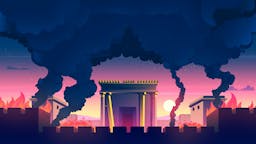
Epic Tales of Tisha B’Av: Yavneh
Video series • Part 1 of 5 • 10 min
On the brink of the complete takeover of Jerusalem, the Roman general Vespasian gave a Jewish sage one wish to be granted. Instead of asking to spare Jerusalem, he asked for the protection of a tiny desert haven of Torah scholarship. This decision may have saved the entire Jewish people from extinction.

Tisha B'Av after the Iran War
Video series • Part 1 of 7 • 12 min
Israel's victory over Iran feels like a pivotal historical moment. But it's not the first time that the Jewish nation has faced a situation like this one.

What Jacob And Joseph Teach Us About Returning Home
Video series • Part 1 of 6 • 8 min
Can mourning bring us closer to redemption? This series dives deep into a connection between Shir Hamaalot (Psalm 126) and the story of Jacob and Joseph to uncover the connection between the depths of grief and unassailable hope.

Mourning: What Death Teaches Us About What It Means to Live
Video • 1 hour, 53 min
How are we supposed to make sense of loss? In this deep dive Premium course, Rabbi Fohrman shares how he has come to understand mourning and loss in the larger context of life, death and living a purposeful life.

Tisha B'Av After October 7th
Video series • Part 1 of 5 • 14 min
We still live in the shadow of October 7th. In many ways it makes Tisha b’Av feel more real. And yet, we still feel a gap from all the tragedies of the distant past that we are also meant to feel. How are we meant to bridge that gap?
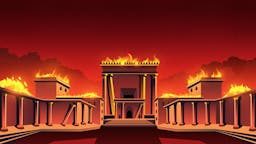
How Am I Supposed To Appreciate The Loss Of The Beit HaMikdash?
Video series • Part 1 of 7 • 9 min
It’s one thing to mourn the suffering of actual people, but how are we supposed to feel genuinely sad over the loss of a building?

What Rachel Imeinu Teaches Us About Mourning
Video series • Part 1 of 5 • 8 min
Mourning on Tisha B’Av may begin with the Temple, but it cannot end there. The familial conflict between Rachel and Leah offers a powerful lesson on how we can take the first steps towards fixing our national tragedy by addressing our personal relationships.
What is Aleph Beta?
Aleph Beta is a unique kind of Torah library. Led by our founder, Rabbi David Fohrman, we are dedicated to high-level, textual Torah learning for adults that is intellectually and spiritually sophisticated, that enlivens your Jewish practice and helps you forge a deeper connection to God. Whether you’ve been learning in yeshiva for years or you’re just beginning your Torah journey, you’re sure to find something meaningful and surprising waiting for you here.
Browse our library of over 1,000 beautifully produced animated videos, podcasts, deep dive courses, and printable guides. Topics include the weekly parsha, Jewish holidays & fast days, laws & mitzvot, prayers, relationships, big philosophical ideas and more. Have something to say at the Shabbos table that will amaze your family and guests and bring deep meaning into their lives.
